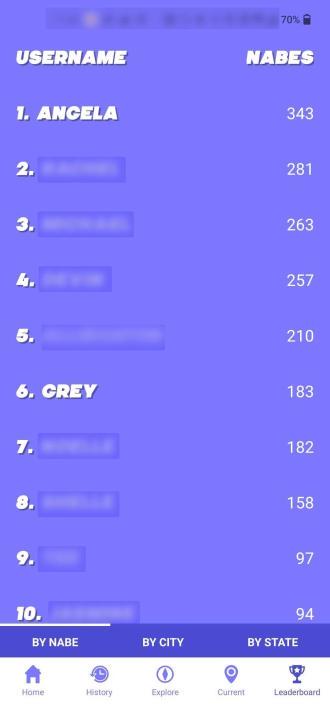I love products that enable hobbyists. This website you’re on is a hobbyist project, a digital garden🌱 Digital Garden – A personal online space where ideas are cultivated like plants in a garden, allowing for continuous growth and evolution. This concept allows for early publishing of thoughts, which can be refined over time within a space that you own and design. For a deeper dive into this philosophy, read Maggie Appleton’s essay on Digital Gardens. where I document and share my ideas with others. So, it is no wonder I would care about technology supporting hobbyists, especially online.
By trying to pinpoint what human-friendly technology is, I discovered that I enjoy hobbyist projects the most.
In another post, I tried to figure out what makes me like certain products more than others. I ultimately concluded that making human-friendly technology is cool and that making human-centered technology is hard. But both are awesome.
Along the way, I realized that the technology products I enjoy the most have to do with hobbies. Furthermore, you can usually tell products are “human-friendly” if they support hobbyists or are used by hobbyists.
For reference, here are my definitions of human-friendly and human-centered:
👶 Human-centered technology prioritizes people, focusing on human experience, preferences, and benefits. Many definitions online are elusive and promote paid courses on human-centered design. My view is that it should save lives or benefit humanity, especially the end-product it delivers. For example, Climate Tech, Green Tech, Health Tech, etc.
👩🌾 Human-friendly Technology is a phrase I coined to emphasize a human-first approach to making practical technology that does not require “save the world” outcomes. I think it is done through a long-term commitment to values and establishing accountability systems to uphold them, like “Building in Public”.
Products that enable hobbyists are not limited to direct support (e.g. Etsy) – indirect support is welcome, too.
I think of indirect support as practical tools (analytics, writing tools, cookie consent, hosting, etc.) that go into making hobbyist projects online. A lot of these hobby hubs are pretty small. Therefore, any company that offers small-scale, affordable (or free) pricing for such tools is a winner in my book.
However, I see platforms that bring hobbyists together as direct support. These usually grow pretty quickly and get complicated due to infrastructure pretty fast.
Examples of hobbyist projects range from marketplaces (Etsy, Craigslist) and galleries (Instagram, Pinterest) to entertainment (YouTube, Pokemon Go) and topical information (forums, Stack Exchange).
What we appreciate about hobbyist platforms (mentioned earlier) is that they really let people come together to share their fun.
As these platforms grow, their original purpose can be obscured by advertising or other money-motivated features. Many of these spaces changed once advertising was introduced (Instagram, YouTube, Etsy). Although many of them are still intact today. Craigslist and specialized forums are still trudging along with the same problems they’ve always had (scams, outdated tools, abandoned content) and still, somehow, avoiding the perils of AI (Stack Exchange suffers this the most).
Can you think of any others that you liked? Xanga? Livejournal? Let me know by writing with me, or dropping a line in my contact form.
At their core, these hobbyist platforms and digital spaces seem to solve human problems well-suited to technological solutions.
Ironically, the driving technology used in most of these is not really that advanced. Unfortunately, to support rising usage costs and scaled infrastructure, these companies must change their business models to pay for the existence of their platforms. Then their business models further exasperate infrastructure costs as they shift to processing data for targeted advertising. Related: read my opinion on business models and how to use them to evaluate companies and products.
Luckily, there are plenty of new hobbyist movements emerging.
A few examples that I believe support human-friendly technology and hobbyists are:
- Indie Web – a community of people who build software to enable others to host and own their content. It is guided by being human-first and design-driven, publishing code as open source, and ensuring longevity.
- Small Web – individuals making and hosting their own content. Not startups, companies, or enterprises. This blog post by Aral Balkan about big web and small web captures it really nicely. I really like this quote: “The Small Web is not a place; it is a public sphere. It’s the interconnections of individually-owned and controlled sovereign spaces on a global digital network”
- Digital Gardening involves people committing to “learning in public,” which means no walled-off posts, paid content, etc. It has philosophies about owning your content, just like indie and small web do. I talk about this enough on the site that I won’t dig deeper here.
- Building in public – a philosophy of building software products with transparency. Touted as the future of marketing and branding, this hub acknowledges that it provides “public accountability for the goals,” among other benefits.
These movements are all rooted in a similar concept of long-term investment. To learn in public, build in public, or otherwise dedicate personal time and resources to make creative spaces online, there’s an intrinsic commitment to building them to last. They all require iteration and consistency before they will “become something.” Additionally, they have a direct relationship with their audience, asking for feedback and being open to receiving it with radical candor.
Instead of traditional comments, I encourage you to respond with blog posts, videos, or other digital creations on your own space (read why here).
👉 Share your response by posting a url to contribute to the evolving conversation section, which also includes prompts to inspire you.
Of all these movements, I think “building in public” is a commitment to making human-friendly technology.
Indie Web, Small Web, and Digital Gardening all have the concepts of being transparent, open, and encouraging feedback, so I count them as doing this innately. These digital spaces are already about people, receiving feedback, and individual ownership.
However, in the tech industry, there’s no common practice being made by organizations, companies, startups, etc., to be transparent about how they build their software. Therefore, I suspect that companies that are joining this “build in public” movement are indeed making human-friendly technology👩🌾 Human-friendly Technology is a phrase I coined to emphasize a human-first approach to making practical technology that does not require “save the world” outcomes. I think it is done through a long-term commitment to values and establishing accountability systems to uphold them, like “Building in Public”.. Who wouldn’t want to choose to work in these organizations? Well, maybe you can if you have the skills.
So, yes, I believe “building in public” is a good accountability system. To explore the topic further, read my post about evaluating companies by their business model, values, and accountability systems.
In addition to being a fan of hobbyist products, I also like to help make them.
At Vertico Labs, my business partner and I created an app called Nabes. Inspired by Pokemon Go, you collect neighborhoods (nabes) as you go about your day or travel to other cities. The idea is to “collect” where you’ve physically been or get familiar with the “nabes” of a new city.

I cannot tell you how many times it came in handy while I was in new cities, learning from locals about neighborhoods. Since I would get push notifications about “New Nabe Discovered!” I would remember where I was and associate that part of town with my experiences. I could relate to the people telling me where to go because I had heard of that place before. It helped me fit in quickly.
What’s great about hobbyist products is that they are small.
And when they are small, they get to be nice. We have never promoted Nabes online (until, I guess, writing about it now), and people who have this app got it from word of mouth. We have no real desire to monetize it, market it, or ruin it. It’s okay with us that it is used by a few because it is fun to experience as is (did I mention I am #1 in the rankings? If more people were on there, I might start losing!). Our values will ensure we never collect, store, or sell location data.
Railway is a product that indirectly helps nabes – and it might help you on your next hobbyist project.
We’re committed to maintaining this project. We have already had to do a few rewrites and hosting changes (this app has been live for several years!). Regarding hosting changes, we are happy we switched to Railway to host this app. Grey is always raving about Railyway to other developers, so I figured I should shout it out. Don’t worry; there’s no affiliate linking on this site! Anyway, if you are looking to host your own hobbyist projects, we recommend them.
👇 Before you go, consider these questions, or see all my prompts for this piece, and maybe even join the conversation!
- What are some of your favorite hobbyist platforms?
- What are ideas you’ve had before to make apps or websites? Were any of them around hobbies?


